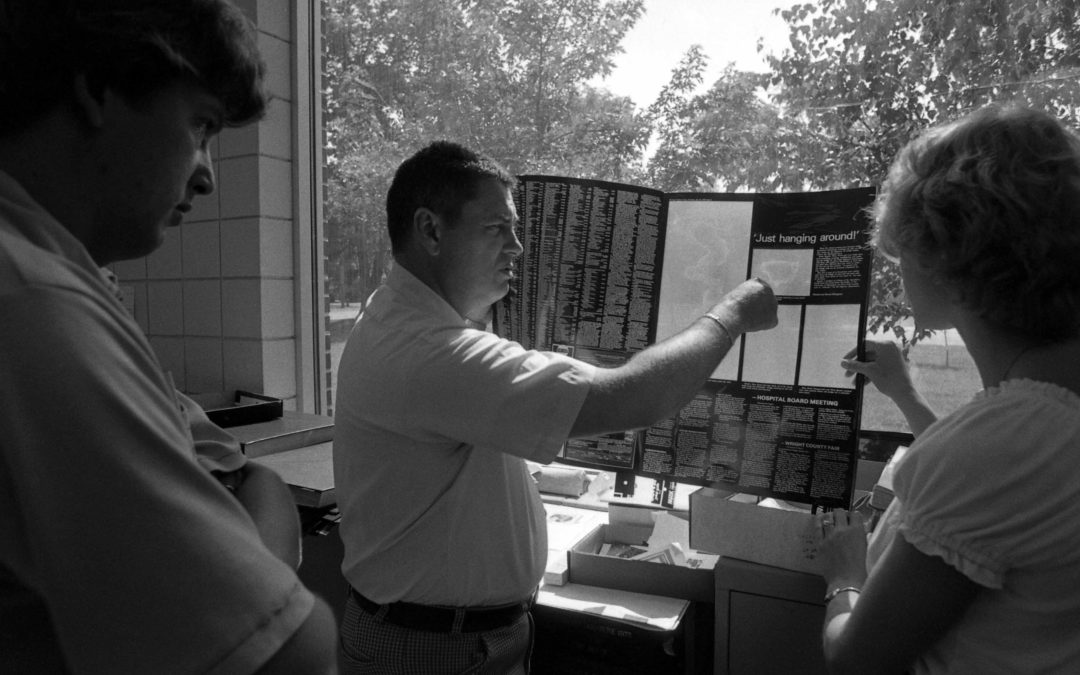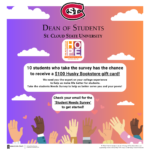Article Written by Emma Bast. Photo credits University Archives.
From starting as one class design to be transferred, the Mass Communications program at St. Cloud State has gone through leaps and bounds.
Early Beginnings to Today
St. Cloud State University’s Mass Communication is celebrating over 50 years as a department. The Mass Communications program, created in 1972, was originally put into planning in 1971. A committee was set up to see if it was possible to reorganize existing programs to create the Mass Communications department.
“People involved in each of the three areas will be appointed to study the feasibility and desirability of such a reorganization and to recommend procedures for its implementation,” said the 1970 University President Wick.
Currently, it is structured as one degree with three options of emphasis. Students can structure their classes towards Journalism, Creative Media Production, or Strategic Communications.
Journalism was first offered at St. Cloud State as a pre-professional preparatory class in the 1946/47 school year as a result of the G.I. Bill, which helped veterans pay for higher education classes. Over time, the pre-professional program evolved into an associate degree, then further into the current Mass Communications department.
By 1959, the Department of English had classes that were geared toward news and magazine writing. This would be some of the groundwork for the present-day Mass Communications department.
By the 1972 school year, there were two different undergraduate programs, Radio and Television as well as Journalism. There were Bachelor of Science and Arts options for both degree programs. At the time, there were three full-time professors and one associate professor for the program.
In 1995, the Mass Communications program decided to restructure its curriculum to allow for more electives. At the time there were four concentration areas: advertising, public relations, news editorials, and broadcasting. Instead of having 20 classes required as core curriculum, that number was reduced to 16 to allow for more diverse options when picking electives.
Over the years the four concentrations have various emphases, particularly in the News and Broadcasting degree paths. Some were geared towards television, others towards print or radio.
In 2020, there was a decision to transition to one degree with three concentrations. Now, students choose between Journalism, Creative Media Production, and Strategic Communications. The new degree paths are broader and offer more availability to take electives within the major.
Student Involvement
The department also features organizations like UTVS, KVSC, and the University Chronicle, all of which are student led. These organizations became a part of the Mass Communications department as it grew.
UTVS, originally known by its full name University Tele-Video System, started as a videotaped show that was shown in Atwood in 1978. Within a year, it was able to be shown on local channel two at noon twice a week.
“Next year, we are hoping for an office and a telephone,” Ruth Thompson said in a press release back in 1978.
Nowadays, UTVS can be viewed on Spectrum Channel 180. It is still student run, with programs covering both news and sports.
KVSC, the campus and community radio station started as Radio Guild in 1960. As the Radio Guild, it aired prerecorded shows on WJON once a week. In 1967, KVSC became its own station, playing mostly classical music. KVSC transitioned to its current Alternative format in 1985.
KVSC is also responsible for hosting its annual trivia contests dating back to 1980. As well as a local artist showcase Monday Night Live which started in 2010. UTVS broadcasts these on their programming as well.
The University Chronicle started in 1924 as a campus newspaper. It had news from faculty as well as from students. It has continued to adapt moving fully digital in 2021.






Recent Comments